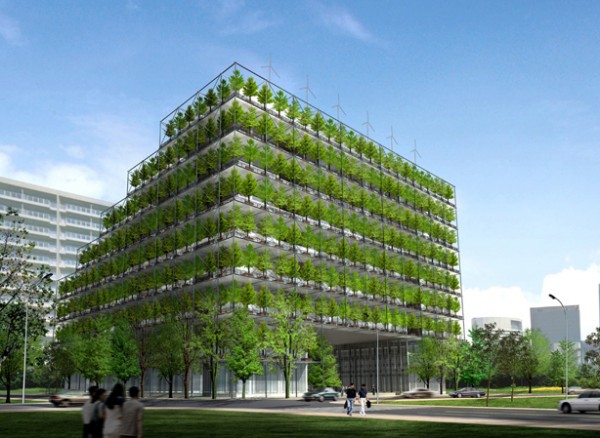Everyone’s trying to lighten their carbon footprint in every way possible, from recycling programs at work to carpools and public transportation for commutes. There are many ways to green up your home after it’s been built, such as solar panels or eco-friendly appliances. However, for developers, architects and those who are customizing their home from the foundation up, there are also some hot green architecture trends you might want to consider.

The first is prefabricated architecture, which uses “ready made” materials to custom-build a home. In the early days, revolutionary architects like Charles Eames embraced this “trend” right after World War II for practical reasons—he didn’t have a clue that these “pret a homes” would one day be a preference, not a necessity. Basically, pre-fab construction is a “build a home kit” so that a house can be put together offsite and quickly, which seriously cuts down on labor.
There are many types of pre-fab homes ranging from frugal to flatout luxurious. You can also select the materials used, making sure they’re just as green as you’d like. Unlike the “manufactured homes” of years past which have a stigma attached to them, pre-fab homes are just as desirable, if not more so, than traditional building methods.
Building Green
Dubbed “archi-tecture,” this is a strategy that utilizes local and sustainable materials to build properties. Not too long ago, plastics, hybrid materials which required a lot of manpower to create, and exotic timber shipped in from around the world was standard. Now, manmade materials are still being used, but with an eye on sustainability. Furthermore, locally sourced materials are being embraced which isn’t just kinder to the environment, but also to your pocketbook.
Another green trend is “pop up architecture” which includes temporary or transitory spaces for events. Unlike permanent properties necessary for homeowners or commercial spaces, this type of architecture is short-term, which traditionally meant it was costly and laborious. Adopting a read-made strategy using scavenged materials is gaining in popularity now, proving that temporary architecture can be minimally invasive.
Putting the “green” into Green Architecture
Urban sprawl isn’t going anywhere, and climate change will likely continue to happen. This means that in addition to more walkable cities, integrating literal green into urban areas is important. Smaller parks, rooftop gardens, and balcony landscapes are easily added into architecture. Not only does it help your well-being and the planet, it encourages serious farm to table home dining.
All of these upsides doesn’t mean that green architecture is the right choice for every building, every architect, every time. However, it does mean you should consider greening up your designs and figure out how to be a little more eco-friendly. For architects and developers on a budget, remember that you can spend as much or as little as you want with these projects. For example, incorporating a rooftop garden might cost the same (or less) than a more traditional roof—and there’s no rule that you have to be the one to do the planting (you just have to provide the space).



